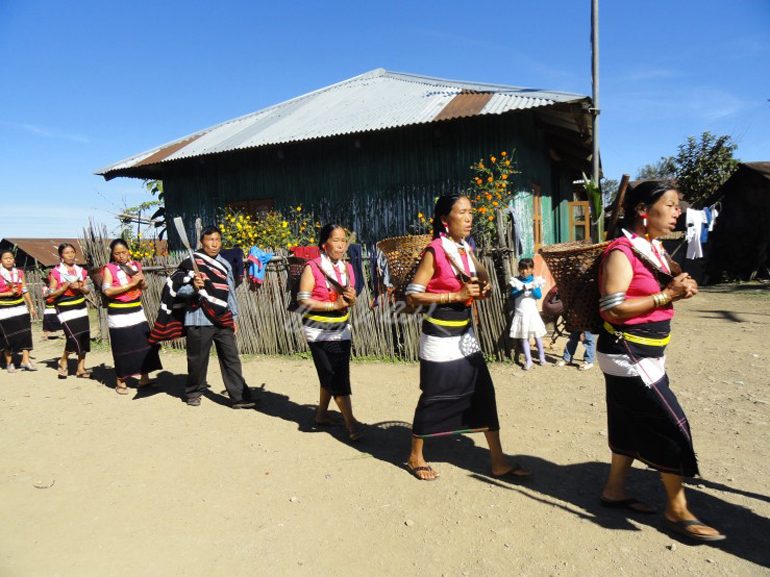Benoy K Behl
Nagaland is a hill state located in the far northeastern part of India. About one-sixth of Nagaland is under the cover of tropical and sub-tropical evergreen forests. There are about 16 major tribes in the state of Nagaland.
Nagaland is a mountainous state. The Naga Hills rise from the Brahmaputra Valley in Assam. Most of the state is between 2,000 and 6,000 feet altitude. About one-sixth of Nagaland is under the cover of tropical and sub-tropical evergreen forests. These include palms and bamboo, as well as timber and mahogany forests. There are about 16 major tribes in the state of Nagaland. There are 15 officially recognized tribes in the State of Nagaland. These include the Lothas, Angami, Ao and Sumis.
Apart from cultural contacts with neighboring Assam, the Nagas had little or no contact with the outside world until the coming of British rule towards the end of the 19th century. More than 80% of the people live in rural areas. Nagas speak 60 different dialects. Each tribe has its own mother tongue. They communicate with each other in a common language which has been developed called Nagamese. Nagamese is not a mother tongue of any of the tribes, nor does it have a written script. English is the official state language.
There is a great cultural richness and variety in this area as each tribe was separately carrying on its independent life. It is a very colorful region. Each tribe has its own songs, their own shawls, their own colours, their own architecture.
It is fascinating to walk into a market place in Kohima the capital of the state of Nagaland. There are numerous different kinds of leaves here which have been collected from the forest. I had not known that the forest had so many things which are edible. Not only are they edible but they are very nutritious and quite delicious. Each of the 16 major tribes in Nagaland used to eat about 200 different kinds of leaves. Through intermarriages in recent times and through meetings in market towns, the tribes have exchanged knowledge with each other. Therefore, today there are at least 1,000 different leaves which have been found to be edible. Most of these are collected from the forests. Many are also cultivated. It goes to show that there are many things which we need to learn about this wonderful world we live in.
Author Benoy K Behl presents an online talk and film screening
Living with Nature (in Nagaland) under the series GLIMPSES OF CULTURE.
Behl produced the film for Doordarshan, today, at 6pm
Click here to join the talk
